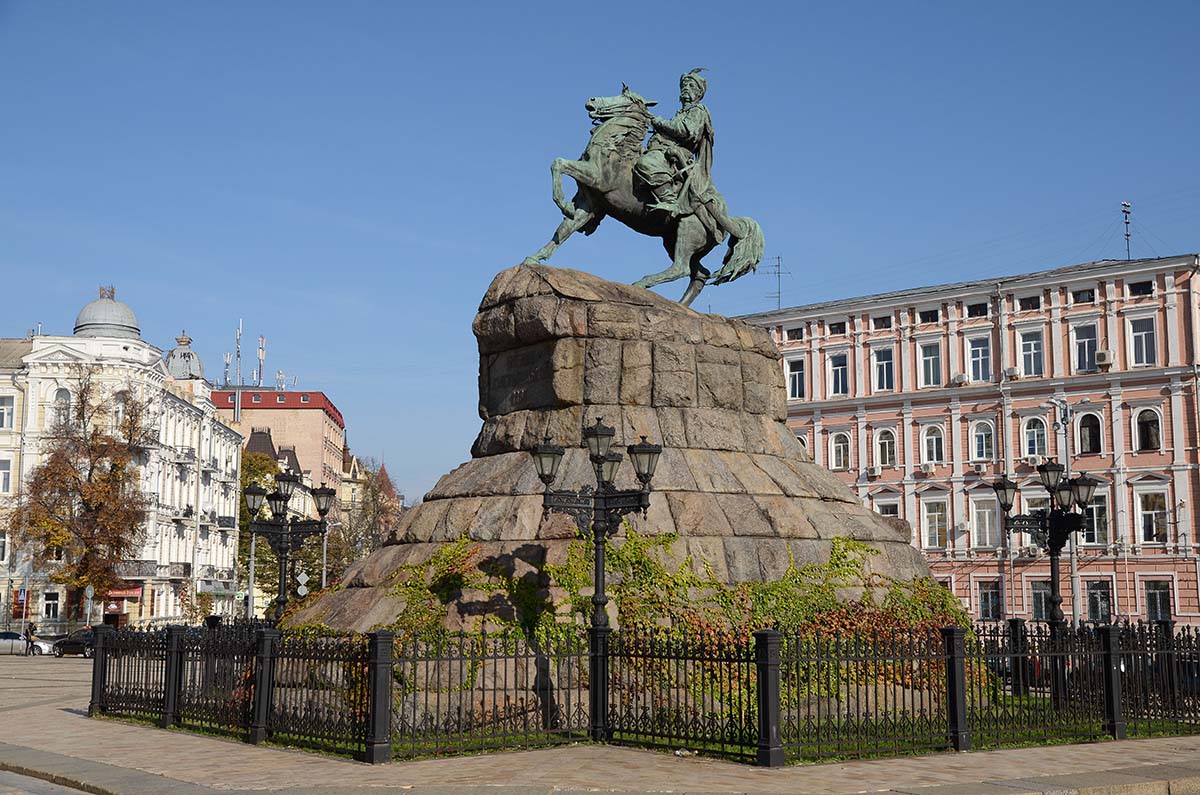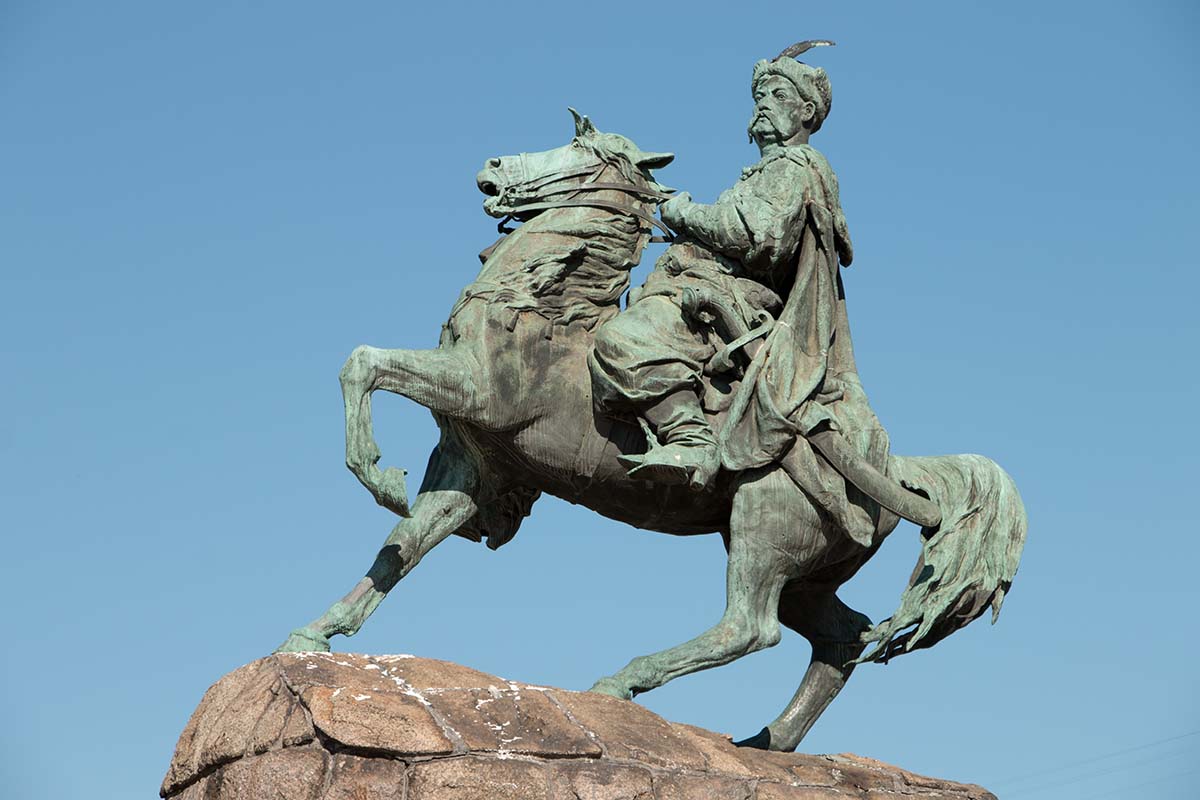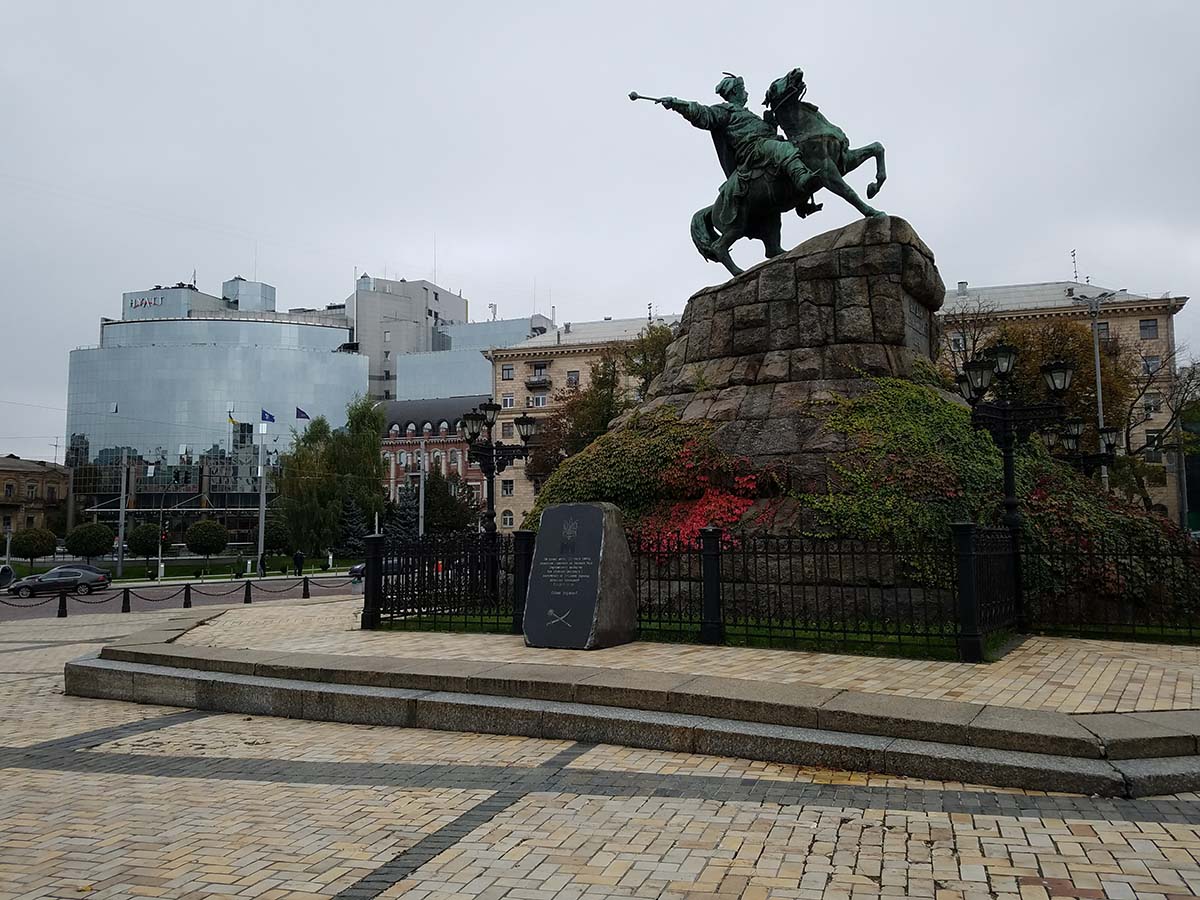The idea of creating a monument arose in society on the initiative of the historian, professor at Kyiv University Nikolai Kostomarov in the 1840s. After receiving permission from the imperial government in 1860, a committee was created headed by Mikhail Yuzefovich, a university professor and head of the Kyiv archaeographic commission. The first design of the monument, created by the famous sculptor Mikhail Mikeshin, was very dramatic – the horse of Bogdan Khmelnitsky pushed a Polish nobleman, a Jewish tenant and a Jesuit from a cliff, in front of which a Little Russian, a Red Russian, a Belarusian and a Great Russian listened to the song of a blind kobzar. The bas-reliefs of the pedestal depicted the battle of Zbarazh, the Pereyaslav Rada and the scene of the entry of the Cossack army led by Khmelnitsky into Kyiv.
In 1870, fundraising began with an all-Russian subscription. Due to the fact that the amount collected was small (37,000 rubles), and also because of the doubts of Governor General Alexander Dondukov-Korsakov regarding the appropriateness of an anti-Polish and anti-Jewish monument, the committee decided to reduce the project budget, leaving only the central figure of the hetman. In 1877, a plaster model was ready, and in 1879, a statue was cast at the Berd plant in St. Petersburg (Mikeshin’s project in metal was realized by P. Velionsky and A. Ober), for which the Maritime Department donated 26 tons of scrap metal. The portrait features and features of Khmelnytsky’s clothing were reproduced with the help of the consultation of historian Vladimir Antonovich.
The following year, the statue was transported to Kyiv, where it stood for several years in the courtyard of the House of Government Offices (a government institution), because there were not enough funds for the pedestal provided for by the project. Only in 1885, the architect Vladimir Nikolaev (Ascension Church on Baykovo cemetery, Tereshchenko mansion, Liberman’s mansion, National Philharmonic, Zaitsev’s mansion, Galperin’s mansion) created a cheaper pedestal project and brought it to life. The stones for the pedestal were donated by the administration of Kyiv Fortress. At the same time, Nikolaev himself worked for free, and in addition, using the money he saved, he also designed a fence with lanterns.
According to rumors, when the monument had already taken its place, it turned out that the horse was very impolitely turned with its tail towards Mikhailovsky Golden-Domed Cathedral. Therefore, the pedestal was deployed, and the hetman’s mace, which, according to the plan, was supposed to threaten Poland, turned out to be pointed somewhere in the direction of Sweden. But, contrary to another widespread legend, Bogdan never pointed to Moscow. The only reminders of the monument’s Moscow orientation were the slabs with the inscriptions on the pedestal: “We will under the Eastern, Orthodox Tsar” and “To Bogdan Khmelnitsky, a single indivisible Russia.” In 1919 and 1924 they were replaced by “Bogdan Khmelnytsky. 1888″. This inscription can still be seen today.
Where is the monument to Bohdan Khmelnitsky located?
Sofievskaya Square


